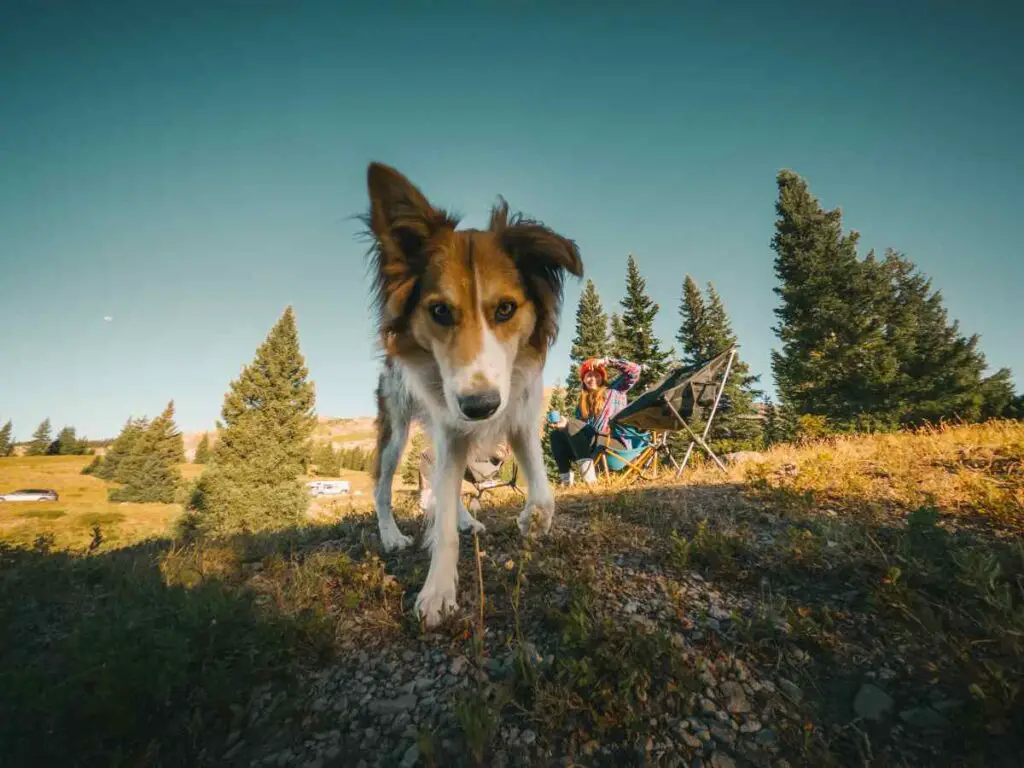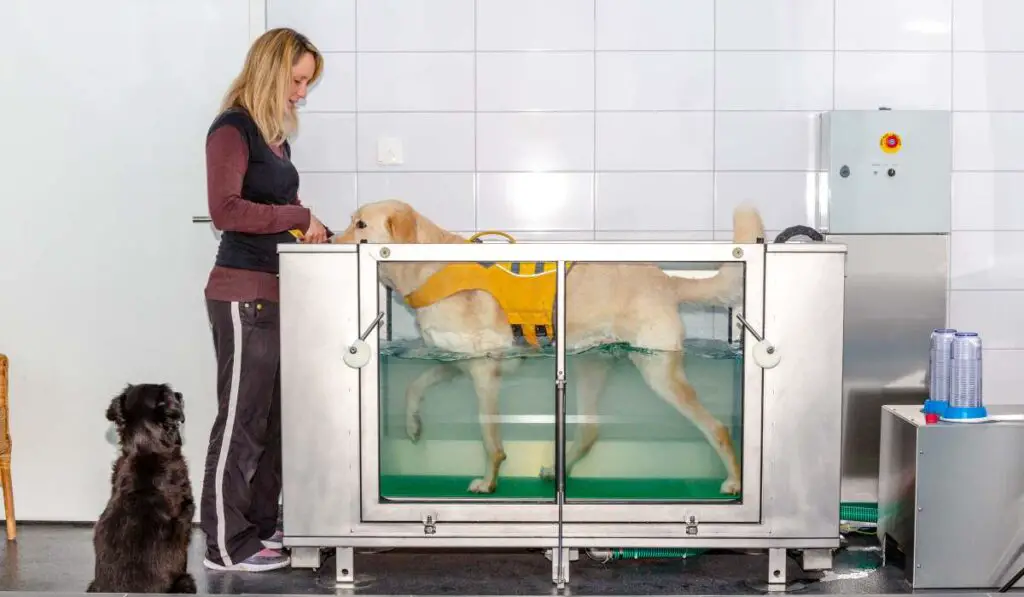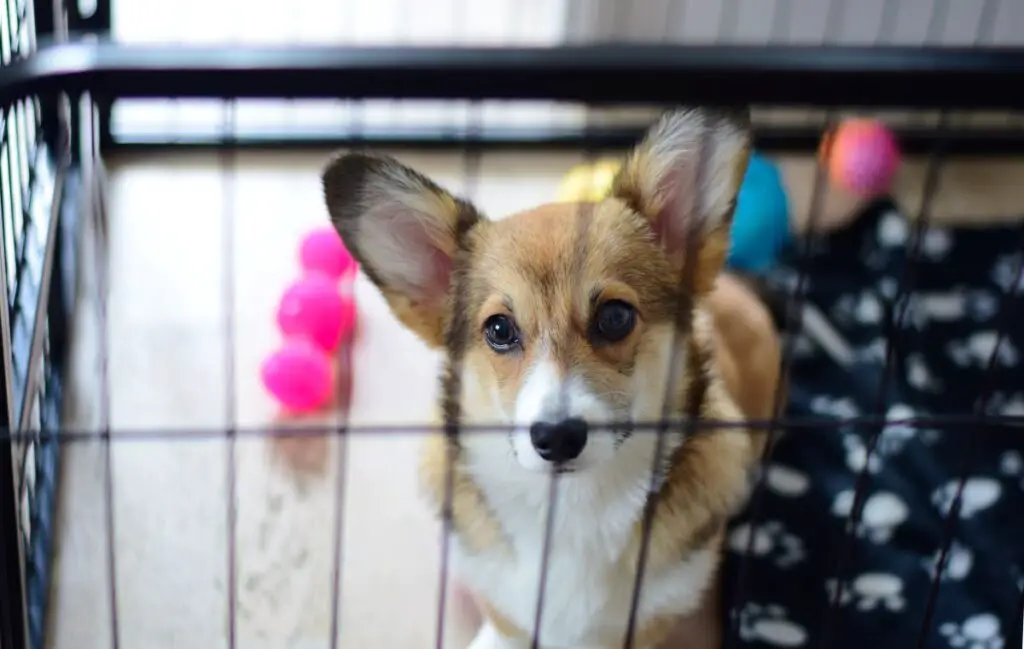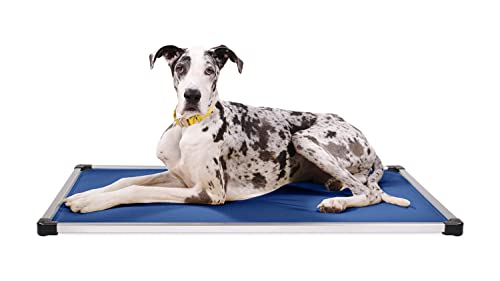When your dog is your best friend, you don’t mind doing a little extra to keep them happy and comfortable.
If you have a small or senior dog who’s spoiled enough to sleep on your bed, they might need a little help to nap in the lap of luxury with you. Adding one of the best dog ramps for beds will give them easy access to the best seat in the house without needing a lift from you.
Keep reading to find the best dog ramp for your bed!
Our Top Picks
Best Overall
Carlson Heritage & Home Indoor Wooden Cat & Dog Ramp
Budget Option
Faglan Foam Indoor Pet Steps
Best for Multiple Pets
TNELTUEB Adjustable Dog Ramp
Best Overall Dog Ramp
Carlson Heritage & Home Indoor Wooden Cat & Dog Ramp

For a great dog ramp for beds that will work for most households, this product is a top choice.
This dog ramp would work for a variety of dogs of different sizes and physical abilities. It can be adjusted to different heights to fit your furniture, with settings at 12 inches, 16 inches, 20 inches, and 24 inches high. This feature also allows you to move this dog ramp from the bed to the couch, even if they’re not the same height.
The simple white design won’t clash with most home decor, so it will look nice in any room.
Convenient handles mean you can take it on the go for dog lovers who like to travel with their pets, and it only weighs nine pounds. You can easily lift it to bring it on vacation or just take it to another room in your house.
This dog ramp will stay in place without slipping, so you don’t have to worry about your friend getting injured as they make their way onto the bed or couch. The surface of the ramp is made of durable carpet, so it will last a long time. It also offers excellent traction for paws, which is great for older or less-mobile dogs.
When it’s not in use, this dog ramp folds flat and locks for quick and easy storage under the bed or in a closet.
Pros
- Convenient to move around wherever you need it
- Helpful and functional for a variety of different dogs and even cats
- Adjustable height makes for an easy fit with your bed or couch
Cons
- Weight limit is 80 pounds, so very large or heavy dogs would need something bigger
- Won’t work for taller beds over 24 inches
Best Budget Dog Ramp
Faglan Foam Indoor Pet Steps

If your dog needs a ramp but you’re looking to save some money, this ramp fits the bill.
The soft cover over foam is comfortable to walk on and very versatile. It’s easy to move around or travel with—just pick it up and go without any concern about damage. The material on the bottom of this dog ramp is anti-slip to make sure it stays put anywhere.
This dog ramp is a great option for bouncy puppies or small- to medium-breed dogs who can’t jump up on the bed themselves. They’ll love the softness of the foam and how easy it is for them to join you and relax. The surface of the ramp has anti-slip sections to make it more secure for your dog to run up and down.
Pets are always messy, so it’s a good thing that the cover on this ramp can be removed and washed in the machine.
Pros
- Washable cover is easy to keep clean, even with messy dogs
- Soft foam is comfortable for pets to use
- Great for puppies and smaller dogs throughout the house
Cons
- Won’t be useful for very large or old and immobile dogs
- Not adjustable, so the set size may not be the right height for your bed
Best Ramp for Large Dogs
PetSafe CozyUp Wooden Cat & Dog Ramp

A big dog needs a big ramp to get on the bed without you breaking your back trying to help them!
Whether you have a large breed puppy, oversize breed that needs more joint protection, or an older large dog who can’t jump like they used to, this dog ramp solves the problem. It can hold up to 120 pounds, so it’s suitable for a wide range of bigger dogs.
It’s wide and very sturdy to help your friend get on the bed easily with a long, low angle ramp that’s gentle on joints. The carpeted surface means your dog won’t slip on their way up or down. It also has a convenient, flat landing area at the top to give your dog an extra measure of security.
This dog ramp is quick and easy to assemble. It has a wood frame that’s made to last, and it also looks great in your home. Choose from white and cherry to match your decore.
Pros
- Perfect for large older dogs with a low ramp angle
- Can support up to 120 pounds
- Looks nice and comes in two colors to choose from
Cons
- Not adjustable height, so it may not be a perfect fit for your bed
- Wouldn’t be convenient to move around the house as needed
Best Ramp for Small Dogs
TOFUUMI Dog Ramp for Beds

If you have a small dog, you probably find yourself picking them up all the time so they can get on the bed or couch. Give them the ability to do it themselves with a convenient ramp that’s perfect for smaller dogs!
This dog ramp can be easily folded flat and locked for storage or travel, and the adjustablility is great for getting a perfect fit. It also comes in different sizes so you can find just the right dog ramp for your dog. The longer ramp length lowers the angle of the ramp, making it easier for your dog to climb.
The carpeted ramp surface provides traction and also has crossbars for added security, and it’s made from durable wood. You’ll have this dog ramp for a long time.
Pros
- Perfect for small and medium sized dogs
- Adjustable height, so you can use it throughout your house
- Lower angle is easier to run up and down
Cons
- Not ideal for bigger, heavier dogs
- Plain look is not very decorative
Best Portable Dog Ramp
TNELTUEB Wooden Folding Portable Pet Ramp

If you love bringing your dog on adventures but they need a little extra help, this foldable dog ramp for beds is perfect for you and our best friend!
The adjustable height will work for a variety of bed and couch heights, especially if you’re always on the go. It folds up nice and small to make storage easy, and the added handle makes it comfortable to move around whenever you need to.
Your dog will get excellent traction on the carpeted surface with crossbars, so you don’t have to worry about slipping or injury. It also locks securely once it’s fully opened up, giving you even more peace of mind that it will stay in place.
Pros
- Folds up for quick and easy travel or storage, plus a convenient handle
- Adjustable height makes it versatile throughout your house r in your travels
- Great for older pets who still like to go for adventures with you
Cons
- Lower weight limit won’t work for medium to large dogs
- Not decorative with raw wood
Best Convertible Dog Ramp

PetSafe CozyUp Dog & Cat Steps & Ramp
Get a dog ramp for the bed that can also convert into stairs!
Easily switch between both configurations to best suit your needs, even for individual pets. Some may prefer bouncing up the steps, while others might need the more gradual incline of a ramp. The legs and steps are adjustable so it’s perfect for your dog and allows you to change the angle if you need to.
Solid construction also folds flat for easy storage when it’s not in use. This dog ramp can support up to 200 pounds, so it will work great for dogs of any size. The carpeting on the ramp is comfortable and secure for them to walk up and down.
Pros
- Super versatile with options for steps or ramp
- High weight limit will be perfect for any size dog
- Clean, white design will look nice with your decore
Cons
- Weighs just under 20 pounds, so may be harder for some people to move around
- Maximum height may not be tall enough for some beds and couches
Best Decorative Dog Ramp
Adjustable Pet Ramp for All Dogs and Cats

Are you looking for a dog ramp for beds that looks nice with your other furniture without sacrificing benefits for your dog?
This ramp looks great and works great too. Beautifully stained wood lends a more premium aesthetic to your space.
The adjustable height of this dog ramp makes it easy to get the perfect height for your bed, and the wide platform is comfortable to use with non-slip carpeting for traction. The design is very stable so you don’t have to worry about wobbling or shaking that might startle your dog. It also has a higher weight limit, making it perfect for any size dog.
You can fold it up flat and use the convenient handle for travel and storage with no hassle.
Pros
- Looks nice in your bedroom
- Offers many different height options
- Extra elements added for superior stability
Cons
- Less durable than other products
- Lighter weight may have movement with energetic dogs
Dog Ramp for Beds Buyer's Guide
What to Look for in a Dog Ramp for Beds
First and foremost, a dog ramp should be safe to use.
That means non-slip on the area your dog will walk up as well as on the parts that sit on the ground. A sturdier build will also help your dog be more confident in using the ramp.
Make sure the ramp you choose is rated to hold your dog’s weight. It’s especially important for larger breeds that the ramp can support them.
If you want to be able to use it in multiple places or for travel, the dog ramp you choose should be easy to move around and have adjustable height.
Helpful Dog Ramp Features
Different dog ramps will have different benefits, so think about what will be most useful to you.
Some are easy to clean with a washable cover. Your dog might prefer a softer foam dog ramp over something more solid.
A dog ramp that can fold up for easy storage is always convenient, and some also have handles so they’re easy to move around.
It’s especially important for older dogs that they have a surface to walk on that’s secure and won’t cause them to slip. Crossbars are also helpful.
Dog Ramp for Beds Frequently Asked Questions
When do I need to get a dog ramp?
There are several situations that would benefit from getting a ramp to help your dog get onto the bed.
Smaller dogs may not be able to jump high enough and need some assistance.
Older or injured dogs that are slowing down and less mobile are harder for you to lift onto the bed yourself. It’s always good to offer a ramp of some kind for your dog, particularly bigger dogs who are more likely to have joint problems later in life. Having a ramp can help prevent or slow mobility issues from jumping up and down.
If you have a hard time bending down to pick up your dog, even if they’re small, using a ramp will make it so much easier on you to have your dog ready to cuddle.
What size dog ramp do I need?
That depends on your dog and your space.
A wider ramp is ideal for bigger dogs or if you have multiple dogs using the ramp at once. Make sure the height will work for the furniture you plan to use it with.
Consider the angle as well. A longer ramp will be less steep, which is better for older or less mobile dogs.
How do I get my dog to use the ramp?
It may take a bit of training for your dog to learn how to use their new ramp. This is especially true if they’re used to being picked up.
Always make their early experiences with the ramp as positive as possible. Let them sniff and inspect, giving them treats for being brave. Place treats going up the ramp to encourage them to start climbing up.
Also practice the same thing going down the ramp so they use it in both directions.
Always praise your dog as they learn and let them go at their own pace. Patience is key!
Wrapping up the Best Dog Ramps for Beds
Your dog is part of your family, and they love to snuggle as much as you do.
Giving them a dog ramp to get on the bed makes it easier for both them and you to enjoy each other’s company. It’s a great way to keep them mobile as they age for a long time to come.For other great tips on keeping your best friend active, check out our dog exercise page!
































































